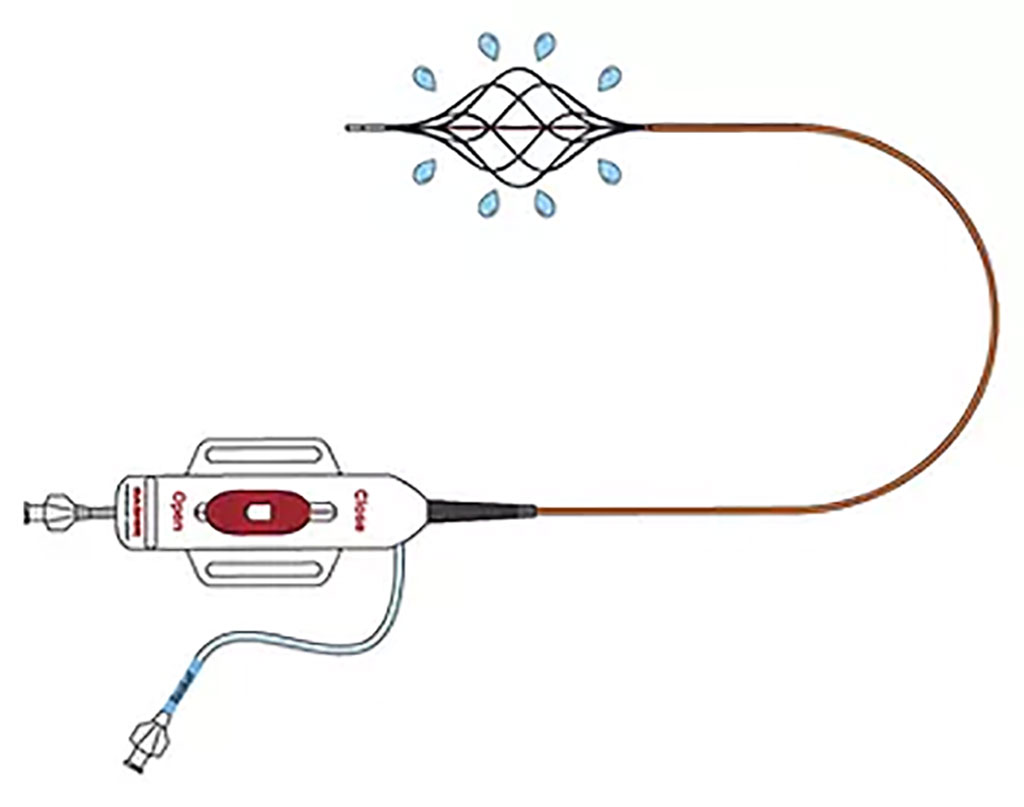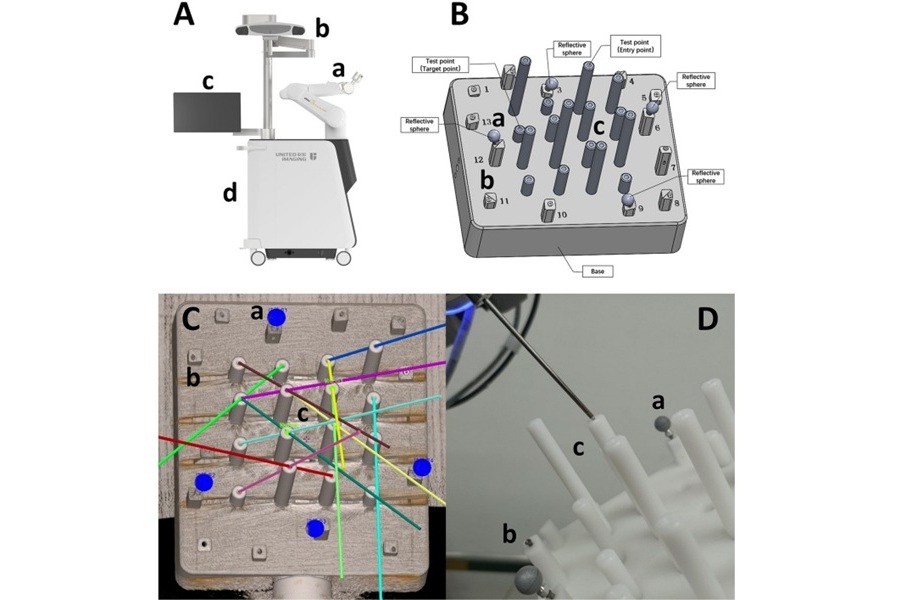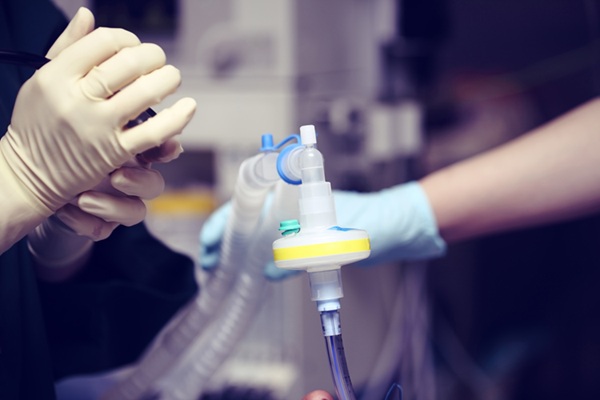New Endovascular Catheter Shows Unprecedented Ability to Treat Pulmonary Artery Obstruction
|
By HospiMedica International staff writers Posted on 20 Sep 2022 |

A breakthrough device significantly reduces the size of blood clots lodged in the pulmonary arteries, leading to improvement in heart function in patients with pulmonary embolism, according to findings of a clinical study.
The new device known as the BASHIR Endovascular Catheter was developed by researchers at the Lewis Katz School of Medicine at Temple University (Philadelphia, PA, USA) in association with THROMBOLEX, Inc. (New Britain, PA, USA). The BASHIR catheter is made of an expandable basket with mini-infusion catheters. Once placed inside a clot, the infusion basket expands, creating new channels in the clot and thereby increasing the surface area exposed to clot-dissolving drugs delivered through the catheters. The greater exposure area accelerates clot breakdown and the restoration of blood flow through the vessel. A key clinical feature of the BASHIR catheter is its ability to shorten treatment duration.
Evidence for the performance of the BASHIR catheter comes from data collected in the RESCUE trial, a clinical study designed to evaluate the safety and efficacy of the catheter as a novel therapy for pulmonary embolism. The magnitude of reduction in the size of clots obstructing the pulmonary artery in the RESCUE trial was significantly greater than reductions reported for therapies currently used in the treatment of pulmonary embolism. The BASHIR catheter was approved by the U.S. Food and Drug Administration (FDA) in 2019 for the treatment of blood clots in veins and arteries in the peripheral vasculature. THROMBOLEX now has FDA clearance on seven devices in the BASHIR family of catheters, all of which are currently in commercialization.
“For the first time, we are able to show that this treatment not only leads to a remarkable reduction in pulmonary artery obstruction in patients with pulmonary embolism but also is a very safe therapy,” said Riyaz Bashir, MD, FACC, Professor of Medicine, Director of Vascular and Endovascular Medicine in the Section of Cardiology Department of Medicine, at the Lewis Katz school of Medicine and Temple University Hospital, and co-inventor of the BASHIR Endovascular Catheter.
“With existing devices, treatment by infusion of clot-dissolving drugs can last as long as 10 hours,” explained Vladimir Lakhter, DO, Assistant Professor of Medicine at the Lewis Katz School of Medicine and an interventional cardiologist involved in the RESCUE trial. “With the BASHIR device, infusion lasts only five hours. Once the device is removed, we are able to see a dramatic decrease in strain on the heart, bringing significant relief for patients.”
Related Links:
Temple University
THROMBOLEX, Inc.
Latest Surgical Techniques News
- Ablation Reduces Stroke Risk Associated with Atrial Fibrillation
- Optical Tracking Method Identifies Target Areas in Robot-Assisted Neurosurgery
- General Anesthesia Improves Post-Surgery Outcomes for Acute Stroke Patients
- Drug-Coated Balloons Can Replace Stents Even in Larger Coronary Arteries
- Magnetic Kidney Stone Retrieval Device Outperforms Ureteroscopic Laser Lithotripsy
- Absorbable Skull Device Could Replace Traditional Metal Implants Used After Brain Surgery
- Magic Silicone Liquid Powered Robots Perform MIS in Narrow Cavities
- 'Lab-on-a-Scalpel' Provides Real-Time Surgical Insights for POC Diagnostics in OR
- Biodegradable Brain Implant Prevents Glioblastoma Recurrence
- Tiny 3D Printer Reconstructs Tissues During Vocal Cord Surgery
- Minimally Invasive Procedure for Aortic Valve Disease Has Similar Outcomes as Surgery
- Safer Hip Implant Design Prevents Early Femoral Fractures
- New Nanomaterial Improves Laser Lithotripsy for Removing Kidney Stones
- Ultraflexible Neurovascular Microcatheter Delivers Therapies to Tiniest Blood Vessels

- Magnetic Soft Robotic Valve Provides Minimally Invasive Intervention for Acid Reflux
- Wireless Metamaterial Spinal Implants Can Feel, Heal and Communicate
Channels
Surgical Techniques
view channel
Ablation Reduces Stroke Risk Associated with Atrial Fibrillation
Atrial fibrillation (AFib) greatly increases the risk of stroke, blood clots, heart failure, and death, and millions of people in the U.S. are expected to be affected in the coming years.... Read more
Optical Tracking Method Identifies Target Areas in Robot-Assisted Neurosurgery
Epilepsy occurs when nerve cells misfire and produce uncontrolled electrical bursts in the brain, leading to seizures. While most patients respond to medication, about 30% require more advanced intervention.... Read morePatient Care
view channel
Revolutionary Automatic IV-Line Flushing Device to Enhance Infusion Care
More than 80% of in-hospital patients receive intravenous (IV) therapy. Every dose of IV medicine delivered in a small volume (<250 mL) infusion bag should be followed by subsequent flushing to ensure... Read more
VR Training Tool Combats Contamination of Portable Medical Equipment
Healthcare-associated infections (HAIs) impact one in every 31 patients, cause nearly 100,000 deaths each year, and cost USD 28.4 billion in direct medical expenses. Notably, up to 75% of these infections... Read more
Portable Biosensor Platform to Reduce Hospital-Acquired Infections
Approximately 4 million patients in the European Union acquire healthcare-associated infections (HAIs) or nosocomial infections each year, with around 37,000 deaths directly resulting from these infections,... Read moreFirst-Of-Its-Kind Portable Germicidal Light Technology Disinfects High-Touch Clinical Surfaces in Seconds
Reducing healthcare-acquired infections (HAIs) remains a pressing issue within global healthcare systems. In the United States alone, 1.7 million patients contract HAIs annually, leading to approximately... Read moreHealth IT
view channel
Printable Molecule-Selective Nanoparticles Enable Mass Production of Wearable Biosensors
The future of medicine is likely to focus on the personalization of healthcare—understanding exactly what an individual requires and delivering the appropriate combination of nutrients, metabolites, and... Read moreBusiness
view channel
Philips and Masimo Partner to Advance Patient Monitoring Measurement Technologies
Royal Philips (Amsterdam, Netherlands) and Masimo (Irvine, California, USA) have renewed their multi-year strategic collaboration, combining Philips’ expertise in patient monitoring with Masimo’s noninvasive... Read more
B. Braun Acquires Digital Microsurgery Company True Digital Surgery
The high-end microsurgery market in neurosurgery, spine, and ENT is undergoing a significant transformation. Traditional analog microscopes are giving way to digital exoscopes, which provide improved visualization,... Read more
CMEF 2025 to Promote Holistic and High-Quality Development of Medical and Health Industry
The 92nd China International Medical Equipment Fair (CMEF 2025) Autumn Exhibition is scheduled to be held from September 26 to 29 at the China Import and Export Fair Complex (Canton Fair Complex) in Guangzhou.... Read more














